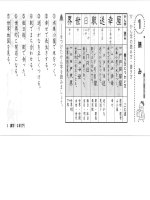Determining meaning from context 3 pot
Bạn đang xem bản rút gọn của tài liệu. Xem và tải ngay bản đầy đủ của tài liệu tại đây (68.47 KB, 6 trang )
Third degree burns are those that char the skin and turn it black or burn so deeply that the
skin shows white. These burns usually result from direct contact with flames and have a great
chance of becoming infected. All third degree burn victims should receive immediate hospital care.
Burns should not be immersed in water, and charred clothing should not be removed from the
victim as it may also remove the skin. If possible, a sterile dressing or bandage should be applied
to burns before the victim is transported to the hospital.
1. The main idea of this passage is best expressed in which sentence?
a. Third degree burns are very serious.
b. There are three different kinds of burns.
c. Some burns require medical treatment.
d. Each type of burn requires a different type of treatment.
2. A mild sunburn should be treated by:
a. removing charred clothing
b. immersing it in warm water and wrapping it in a sterile bandage
c. getting immediate medical attention
d. gently cooling the burned skin with cool water
3. Which of the following is NOT a recommended treatment for third degree burns?
a. Immerse in warm water.
b. Get immediate hospital care.
c. Apply a sterile bandage.
d. Keep charred clothing on the victim.
4. The word it in the first sentence of paragraph 4 refers to:
a. a third-degree burn
b. the skin
c. charred clothing
d. infection
5. The phrase old wives’ tale in paragraph 3 could best be replaced by which word or phrase?
a. good advice
b. lie
c. ancient story
d. popular belief
– READING COMPREHENSION SKILLS–
46
6. Where in the passage does the author describe the characteristics of second-degree burns?
a. at the end of paragraph 2
b. at the beginning of paragraph 3
c. at the end of paragraph 3
d. at the beginning of paragraph 4
Comprehensive Practice Passage 2
(The numbers in the text are for the sentence insertion question.)
There are two types of diabetes: insulin-dependent (Type I) and non-insulin-dependent
(Type II). An estimated 14 million people in the United States have diabetes, and most (90–95%)
have the non-insulin-dependent type. Unlike the symptoms of Type I diabetes, the symptoms of
Type II often develop gradually and are hard to identify at first. (1) Therefore, nearly half of all peo-
ple with Type II diabetes do not know they have it. (2) While the causes, onset of symptoms, short-
term effects, and treatments of the two types differ, both types of diabetes can cause the same
long-term health problems. (3)
The most important problem is the way both types affect the body’s ability to use digested
food for energy. Diabetes does not interfere with digestion, but it does prevent the body from using
an important product of digestion—glucose (commonly known as sugar)—for energy. After a
meal, the normal digestive system breaks some food down into glucose. The blood carries glucose
throughout the body, causing blood glucose levels to rise. In response to this rise, the hormone
insulin is released into the blood stream. Insulin signals the body tissues to metabolize, or burn,
the glucose for fuel, which causes blood glucose levels to return to normal. The glucose that the
body does not use right away is stored in the liver, muscle tissue, or fat.
In both types of diabetes, however, this normal process malfunctions. A gland called the pan-
creas, found just behind the stomach, makes insulin. In people with insulin-dependent diabetes,
the pancreas does not produce insulin at all. These patients must have daily insulin injections to
survive. People with non-insulin dependent diabetes usually produce some insulin in their pan-
creas, but the body’s tissues do not respond very well to the insulin signal and therefore do not
metabolize the glucose properly. This condition is also known as insulin resistance.
There’s no cure for diabetes yet. (4) However, there are ways to al
leviate its symptoms. In
1986, a National Institutes of Health panel of experts recommended that the best treatment for
Type II diabetes is a diet that helps one maintain a normal weight and balances all food groups.
Many experts, including those in the American Diabetes Association, recommend that 50–60 per-
cent of daily calories come from carbohydrates, 12–20 percent from protein, and no more than
30% from fat. Foods that are rich in carbohydrates, like breads, cereals, fruits, and vegetables, break
down into glucose during digestion, causing blood glucose to rise. Additionally, studies have shown
that cooked foods raise blood glucose higher than raw foods.
– READING COMPREHENSION SKILLS–
47
7. What is the author’s main purpose in this passage?
a. to show readers how to prevent diabetes
b. to show the differences between Type I and II diabetes
c. to describe the best diet for people with diabetes
d. to describe the health problem caused by both types of diabetes
8. The word alleviate in paragraph 4 is closest in meaning to
a. get rid of.
b. reduce.
c. increase.
d. medicate.
9. Insulin is produced by
a. the stomach.
b. the pancreas.
c. the blood.
d. the liver.
10. Which of the following is NOT true of glucose?
a. It is produced from food during digestion.
b. It is carried in the bloodstream.
c. It is burned by the body for energy.
d. It is a hormone produced by the body.
11. The passage suggests that:
a. A diet too heavy in carbohydrates is bad for people with diabetes.
b. People with diabetes need extra carbohydrates in their diet.
c. Diabetes is not really a very serious disease.
d. People with diabetes should lose weight.
12. What does the author mean by the statement Diabetes does not interfere with digestion, but it does
prevent the body from using an important product of digestion—glucose (commonly known as
sugar)—for energy?
a. Diabetes prevents the body from digesting food.
b. Diabetes is triggered by too much sugar in the body.
c. Diabetes causes the body to burn too much glucose for energy.
d. Diabetes blocks the body’s ability to process sugar during digestion.
– READING COMPREHENSION SKILLS–
48
13. The following sentence can be inserted into the passage:
But it is very important for people to be aware that they have this disease.
Where would this sentence best fit in the passage? Choose the number to indicate where you would
add the sentence to the passage.
a. (1)
b. (2)
c. (3)
d. (4)
– READING COMPREHENSION SKILLS–
49
HEN WE ARE communicating with others, speaking has several advantages over writing.
For one thing, speaking enables dialogue. If we don’t understand what the speaker is say-
ing, we can ask the speaker to repeat, rephrase, or clarify his or her ideas. For another,
when we speak, we have much more freedom to play with grammar and stylistic conventions. We can use
slang, clip off endings of words, and state incomplete or run-on thoughts. Because we are speaking, often for-
mulating our thoughts as we go, it is natural and even acceptable to make occasional grammatical mistakes.
And when we do, we have the chance to correct ourselves before we continue.
Not so with writing. Writing necessarily distances us from our audience, and we cannot correct ourselves
as we go along or backtrack if our reader doesn’t understand what we have written. When we write, there-
fore, we need to be clear and correct from the start. Otherwise, our readers may not be able to understand
our message.
Because you will do an enormous amount of writing in college—including lab reports, research papers,
and essays—admissions officers need to know that you can communicate clearly and correctly in written Eng-
lish. That’s why Section II of the TOEFL exam tests your knowledge of English grammar and style.
CHAPTER
Structure:
Grammar
and Style
As you can imagine, you will do a great deal of writing in college. To
do well in an American school, you will need to write in clear, gram-
matically correct English. In this chapter, you will learn exactly what the
structure section of the TOEFL exam is like. You will also review and
practice basic grammatical rules and patterns so you can write cor-
rectly and perform well on the exam.
3
51









